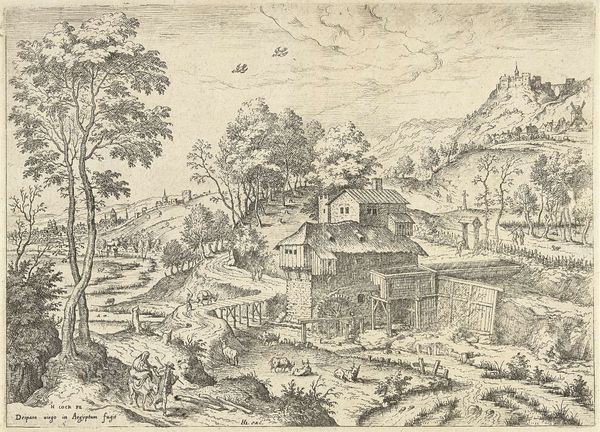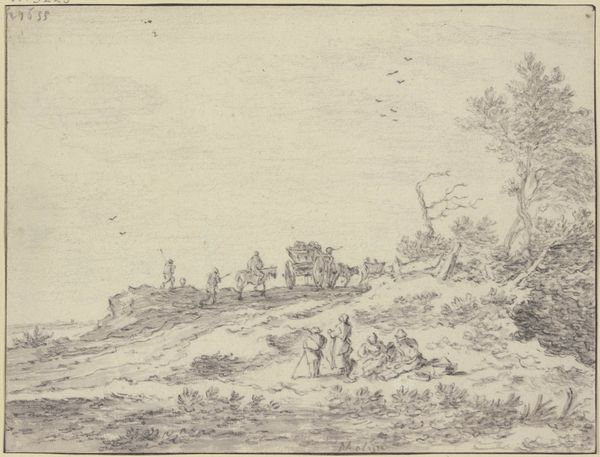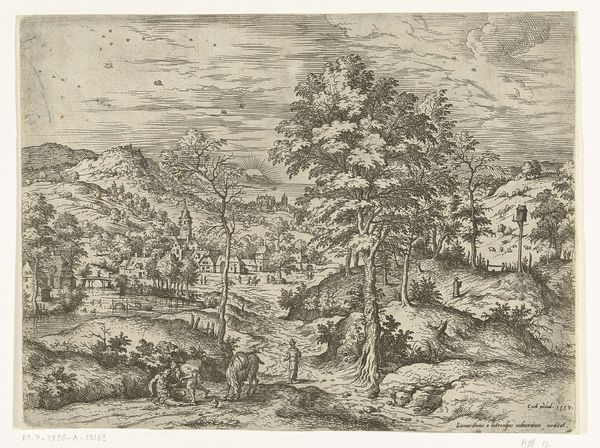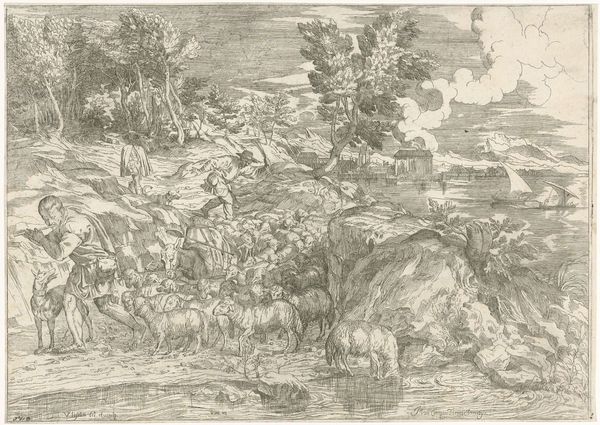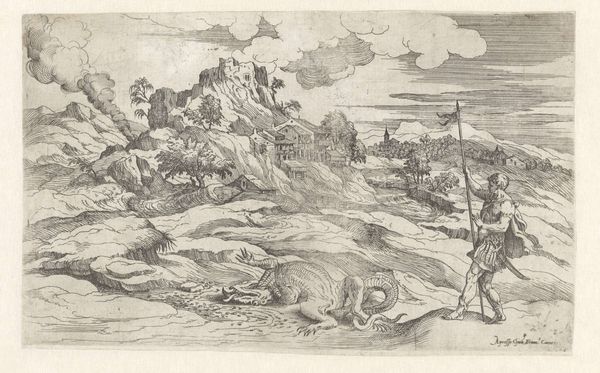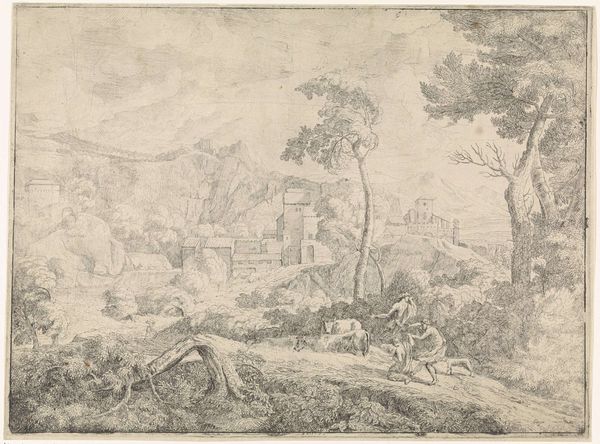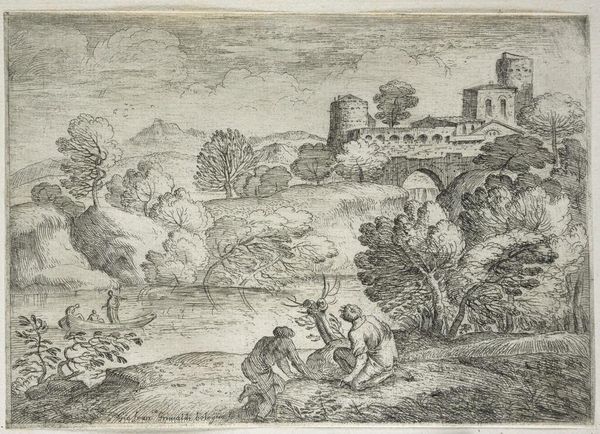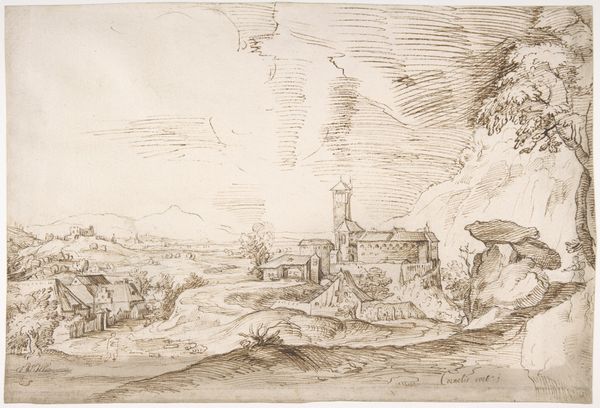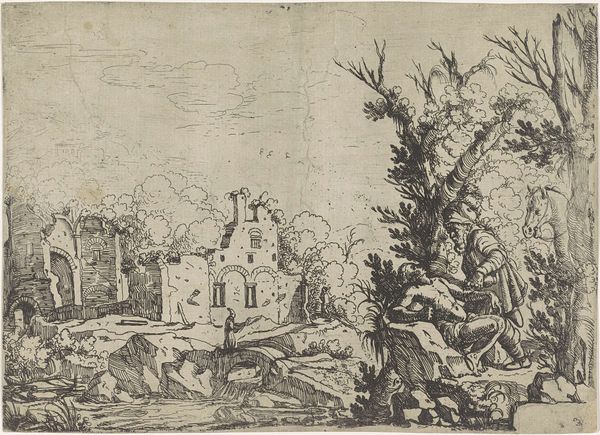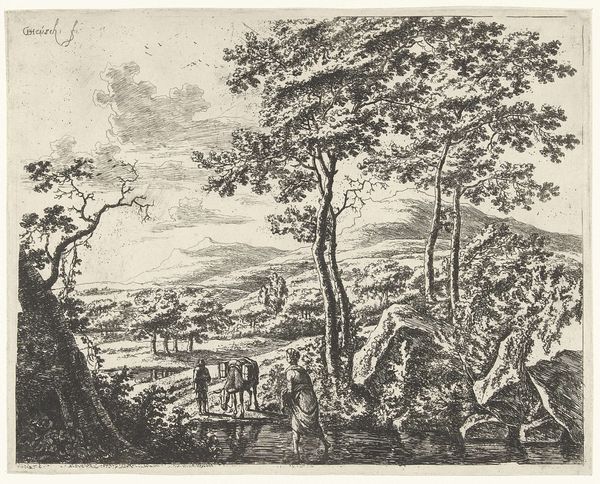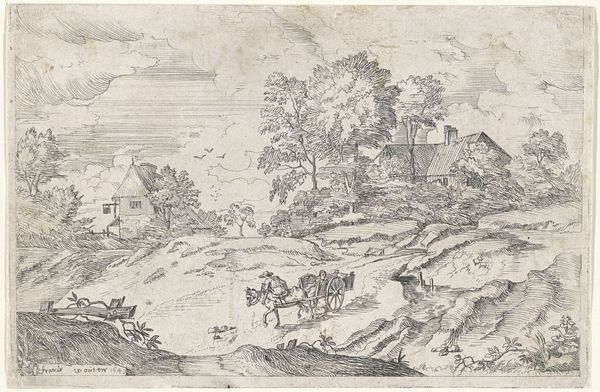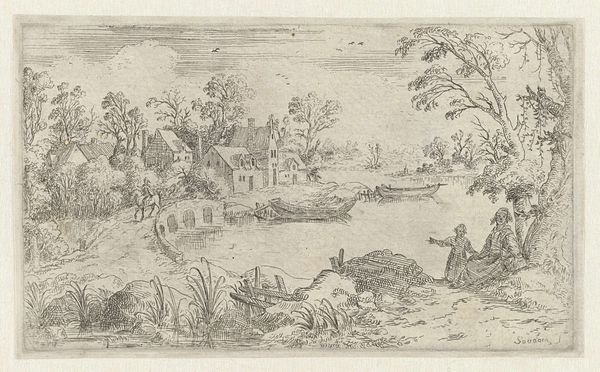
print, etching, engraving
#
baroque
#
dutch-golden-age
# print
#
etching
#
landscape
#
cityscape
#
engraving
Dimensions: height 225 mm, width 335 mm
Copyright: Rijks Museum: Open Domain
Curator: This etching and engraving, entitled "Landschap met watermolen" or "Landscape with Watermill", offers a glimpse into the 17th century. It's attributed to Adriaen van Stalbemt, active during the Dutch Golden Age. Editor: My first thought is how delicate the lines are. It feels almost like looking at a faded memory, with incredibly detailed structures emerging from a softer background. Curator: Van Stalbemt’s work frequently depicted landscapes integrated with scenes of everyday life. His depictions can be read as both celebrating rural life and indirectly reflecting the growing urbanization of the Dutch Republic. These landscapes became increasingly popular during the period, serving as reflections of national identity. Editor: It's interesting how the cityscape in the background anchors the seemingly natural landscape. The watermill and other architecture look incredibly tangible. I wonder about the labor required to maintain it, from the construction materials to the machinery, to the social dependency on the waterway and milling technology depicted. Curator: The printmaking process itself speaks to a particular mode of artistic production during this period. The affordability and replicability of prints contributed to their wider dissemination, making art more accessible to different social classes beyond the patronage networks that favored painting. Editor: Definitely. The texture and tone feel reliant on mass production of resources, as much as skill and artistry. You can really imagine a workshop filled with artisans working on the printing process here. Also, notice how light and shadow define each aspect. How do the processes of creating tonal depth through etching contribute meaning to the work? Curator: Absolutely. The technique allowed him to create depth and texture which resonated with contemporary tastes. Think about how it was consumed, perhaps pasted into albums or framed for display, further integrating the natural and manufactured world. The choice of landscape speaks volumes about the evolving sense of place. Editor: It’s such a simple subject matter that shows us how we, in turn, create the meaning. Thank you for highlighting the cultural and social impact it holds. Curator: A beautiful reflection of a moment in Dutch history, mediated through its means of production.
Comments
No comments
Be the first to comment and join the conversation on the ultimate creative platform.

